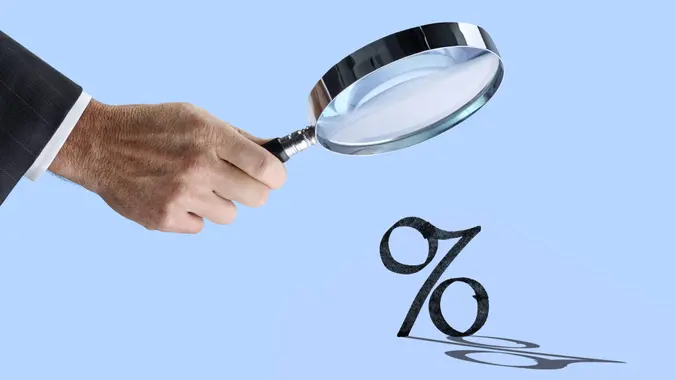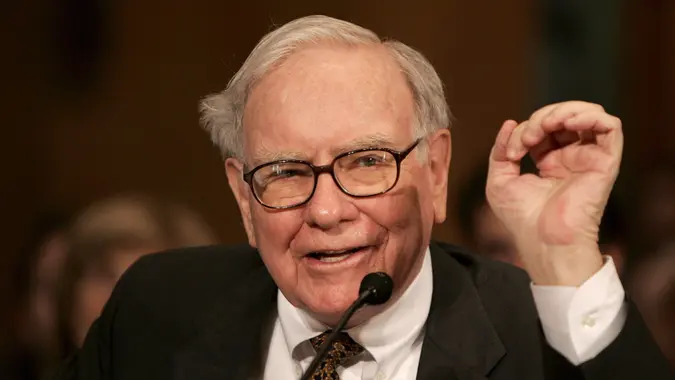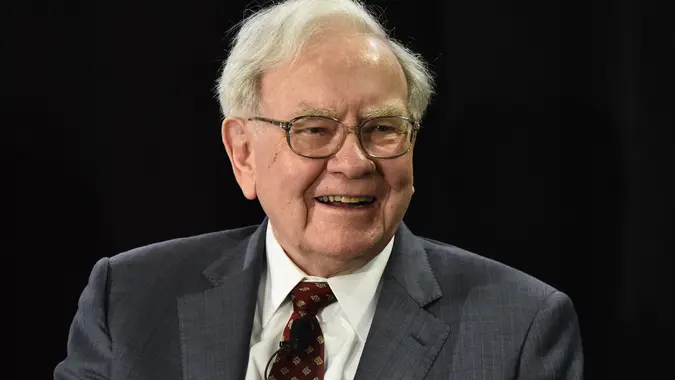Here Are 6 Investments To Make When Interest Rates Peak

Commitment to Our Readers
GOBankingRates' editorial team is committed to bringing you unbiased reviews and information. We use data-driven methodologies to evaluate financial products and services - our reviews and ratings are not influenced by advertisers. You can read more about our editorial guidelines and our products and services review methodology.

20 Years
Helping You Live Richer

Reviewed
by Experts

Trusted by
Millions of Readers
In its effort to orchestrate a soft landing for the economy, the Federal Reserve has hiked interest rates 11 times since March 2022. The latest — a 25 basis point increase on July 26 — boosted interest rates to their highest in 22 years.
Said increase comes a month after the Fed paused benchmark raises to gauge the country’s economic state following the failure of three regional banks this year. While the door has been left open for another rate hike in 2023, according to CNN, investors are hoping for more pauses than hikes in the near future — and will be looking for opportunities to diversify their holdings with safe gainers when things become more balanced.
Here are six potential investments to consider as interest rates peak.
1. Bonds
High interest rates mean that bonds and other fixed-income investments offer more attractive yields. Consider investing in bonds with longer maturities, as they tend to offer higher interest rates than short-term bonds.
Speaking to U.S. News & World Report, Asher Rogovy, chief investment officer at Magnifina, said: “If you have perfect foresight about interest rates, then it makes sense to buy high-credit, fixed-rate bonds. Generally, these are U.S. Treasurys.”
2. Growth Stocks
Low interest rates can boost economic growth and consumer spending, which can benefit growth-oriented companies. Growth stocks, defined by The Motley Fool as “companies that increase their revenue and earnings at a faster rate than the average business in their industry or the market as a whole,” may present opportunities. Investing in growth stocks with strong potential for revenue and earnings expansion can be advantageous in a low-rate environment.
3. Real Estate
Real estate investments can be a good hedge against inflation, which often accompanies higher interest rates. When interest rates peak, property prices may stabilize or even dip, presenting opportunities for real estate investors to buy properties at relatively attractive prices. Additionally, rental income from properties can provide a consistent cash flow.
4. Technology and Innovation Stocks
Although valuations may have already been factored in the price of high-flying sectors like information tech, technological advancements and innovation typically tend to flourish after interest rates peak. Companies involved in disruptive innovation, clean energy and, of course, artificial intelligence may have substantial growth prospects during such times. Tech sector stocks in general should be more lucrative when interest rates fall.
5. Certificates of Deposit (CDs)
As interest rates rise, so do the yields on savings accounts and certificates of deposit (CDs). While having a locked-in rate and not offering the potential for substantial growth, low-risk CD options can provide a safe place to park cash while earning some return. They also benefit from FDIC insurance on balances up to $250,000.
“If you are a conservative investor or are close to retirement, certificates of deposit can be laddered to provide cash flows matching your retirement income needs,” said Dr. Enoch Omololu, CEO of Snappy Rates, per U.S. News and World Report.
6. Preferred Stocks
Preferred stocks, or “preferred shares,” are a class of corporate ownership that represents a hybrid security with characteristics of both stocks and bonds. Preferred stocks usually pay a fixed dividend, which means the dividend amount is predetermined and does not fluctuate with the company’s performance or profits. This fixed income-like characteristic makes preferred stocks attractive to income-focused investors.
 Written by
Written by  Edited by
Edited by 

























